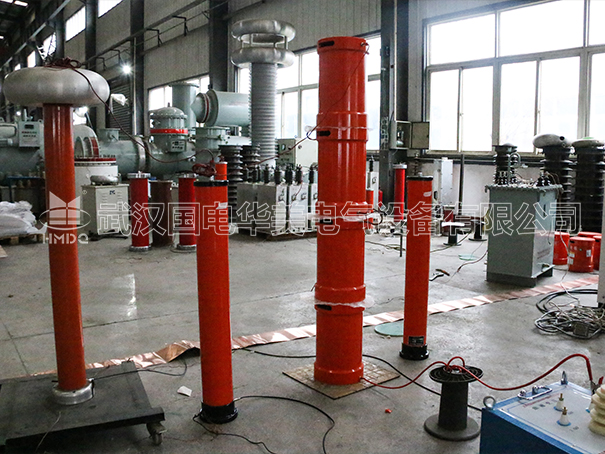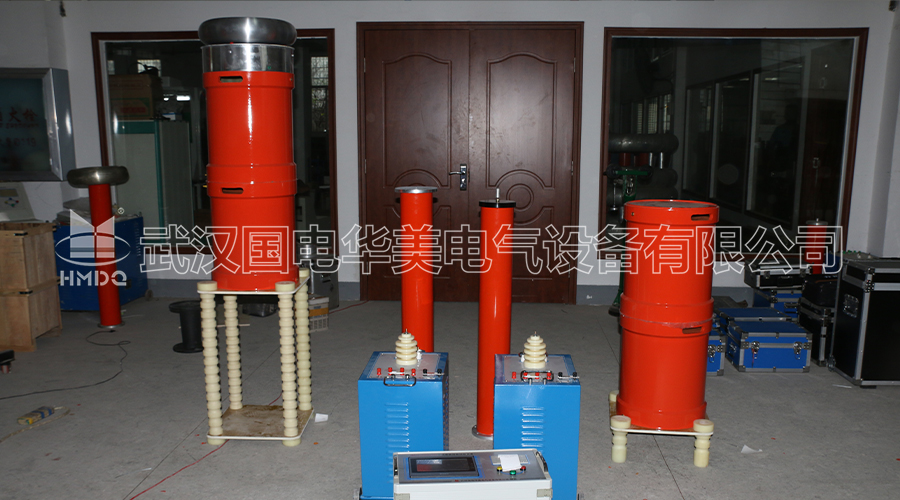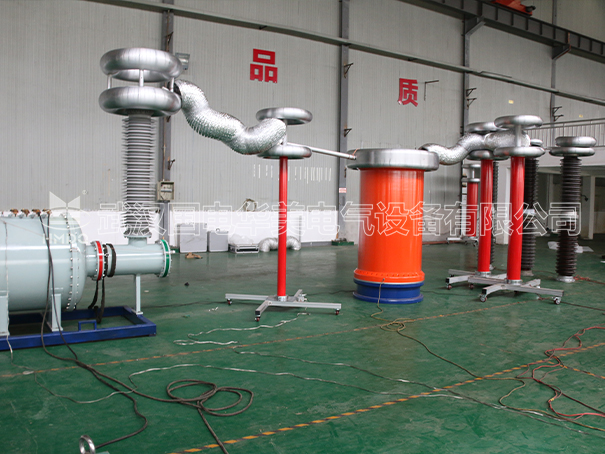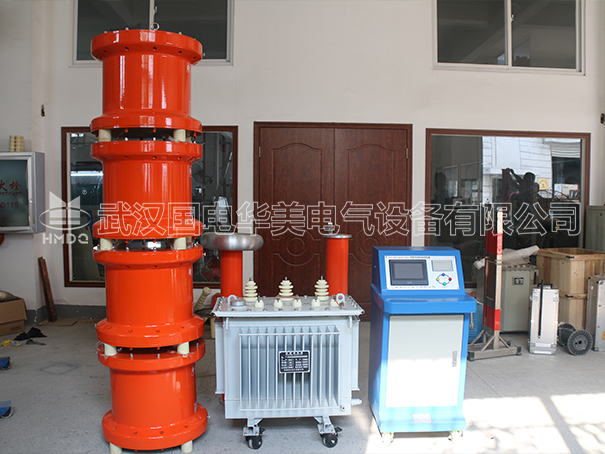Troubleshooting and Causes of AC Resonance Testing System

Variable frequency series resonant faults troubleshooting and causes
Variable frequency series resonant circuits are widely used in many industrial applications,including power electronics,electrical power transmission,and distribution systems.These circuits are known for their high efficiency,low noise,and excellent voltage regulation.However,like any other electrical system,variable frequency series resonant circuits are not immune to faults and failures.In this essay,we will discuss the troubleshooting process and the possible causes of faults in variable frequency series resonant circuits.
Before we dive into the troubleshooting process,let us first understand the basic working principle of a variable frequency series resonant circuit.This circuit consists of an inductor(L),a capacitor(C),and a load(R)connected in series.The circuit is excited by a variable frequency source,typically a power electronic converter.The resonant frequency of the circuit is given by:
f=1/(2π√LC)
When the frequency of the source matches the resonant frequency of the circuit,the circuit exhibits a high impedance,resulting in a voltage amplification across the load.This phenomenon is known as resonance.
Now,let us discuss the possible causes of faults in variable frequency series resonant circuits.The most common faults include:
1.Overvoltage or overcurrent:This fault occurs when the voltage or current in the circuit exceeds the rated values.This could be due to a fault in the power electronic converter or a short circuit in the load.
2.Resonance shift:This fault occurs when the resonant frequency of the circuit shifts from its original value.This could be due to a change in the values of L or C,or a change in the load impedance.
3.Component failure:This fault occurs when one or more components in the circuit fail.This could be due to aging,overheating,or poor quality components.
Now,let us discuss the troubleshooting process for variable frequency series resonant circuits.The process typically involves the following steps:
1.Identify the fault:This could be done by analyzing the voltage and current waveforms,measuring the circuit parameters,and checking the components for physical damage.
2.Isolate the fault:This could be done by disconnecting the faulty component or section of the circuit and testing it separately.
3.Repair or replace the faulty component:Once the fault has been identified and isolated,the faulty component can be repaired or replaced.
4.Test the circuit:After the repair or replacement,the circuit should be tested to ensure that it is functioning properly.
In conclusion,variable frequency series resonant circuits are widely used in many industrial applications.However,like any other electrical system,they are not immune to faults and failures.The most common faults include overvoltage or overcurrent,resonance shift,and component failure.The troubleshooting process typically involves identifying the fault,isolating the fault,repairing or replacing the faulty component,and testing the circuit.By following these steps,the faults in variable frequency series resonant circuits can be easily identified and resolved,ensuring the smooth operation of the system.
Variable frequency series resonant circuits are widely used in many industrial applications,including power electronics,electrical power transmission,and distribution systems.These circuits are known for their high efficiency,low noise,and excellent voltage regulation.However,like any other electrical system,variable frequency series resonant circuits are not immune to faults and failures.In this essay,we will discuss the troubleshooting process and the possible causes of faults in variable frequency series resonant circuits.
Before we dive into the troubleshooting process,let us first understand the basic working principle of a variable frequency series resonant circuit.This circuit consists of an inductor(L),a capacitor(C),and a load(R)connected in series.The circuit is excited by a variable frequency source,typically a power electronic converter.The resonant frequency of the circuit is given by:
f=1/(2π√LC)
When the frequency of the source matches the resonant frequency of the circuit,the circuit exhibits a high impedance,resulting in a voltage amplification across the load.This phenomenon is known as resonance.
Now,let us discuss the possible causes of faults in variable frequency series resonant circuits.The most common faults include:
1.Overvoltage or overcurrent:This fault occurs when the voltage or current in the circuit exceeds the rated values.This could be due to a fault in the power electronic converter or a short circuit in the load.
2.Resonance shift:This fault occurs when the resonant frequency of the circuit shifts from its original value.This could be due to a change in the values of L or C,or a change in the load impedance.
3.Component failure:This fault occurs when one or more components in the circuit fail.This could be due to aging,overheating,or poor quality components.
Now,let us discuss the troubleshooting process for variable frequency series resonant circuits.The process typically involves the following steps:
1.Identify the fault:This could be done by analyzing the voltage and current waveforms,measuring the circuit parameters,and checking the components for physical damage.
2.Isolate the fault:This could be done by disconnecting the faulty component or section of the circuit and testing it separately.
3.Repair or replace the faulty component:Once the fault has been identified and isolated,the faulty component can be repaired or replaced.
4.Test the circuit:After the repair or replacement,the circuit should be tested to ensure that it is functioning properly.
In conclusion,variable frequency series resonant circuits are widely used in many industrial applications.However,like any other electrical system,they are not immune to faults and failures.The most common faults include overvoltage or overcurrent,resonance shift,and component failure.The troubleshooting process typically involves identifying the fault,isolating the fault,repairing or replacing the faulty component,and testing the circuit.By following these steps,the faults in variable frequency series resonant circuits can be easily identified and resolved,ensuring the smooth operation of the system.




